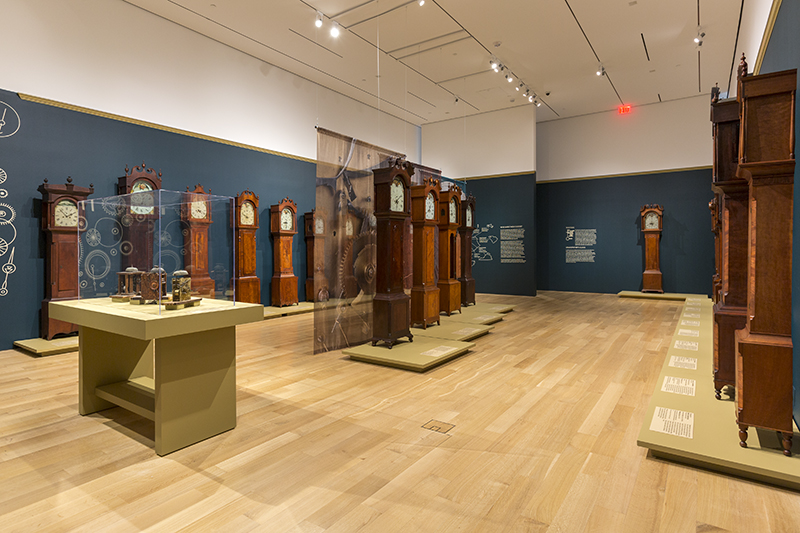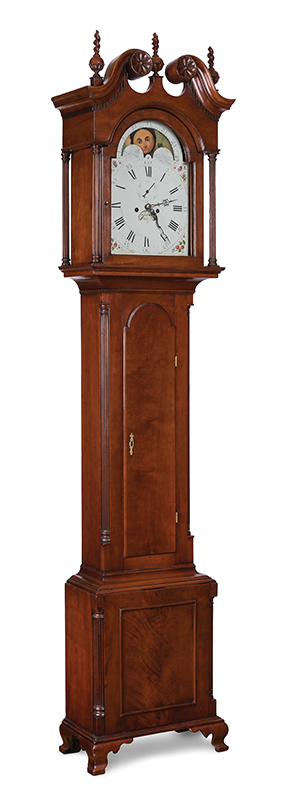
The twenty-seven tall-case clocks on view at the Speed Art Museum in Louisville, Kentucky, offer a rare glimpse of material life in the early American West. Beginning in 1775, Kentucky was among the first regions of colonial settlement west of the Appalachians, but Native hostilities stunted development until after 1794. By 1816 Lexington, Kentucky, was America’s principal western city. It was a cosmopolitan community, with people from most other parts of America, as well as Europe and Africa, melted into a place that became known as the “Athens of the West.”

The earliest Kentucky tall-case clocks are rococo in style, date to the 1790s, and emulate those made in faraway places. One is attributed to Daniel Spencer (c. 1741–1796) of Rhode Island, where he likely apprenticed with John Goddard (c. 1723–1785). Before arriving in Lexington in 1793, Spencer made some of the most celebrated American furniture, including a Rhode Island desk-and-bookcase that sold for a record price in 1989 at Christie’s. The Kentucky clock attributed to him has a Rhode Island–like case but lacks a shell-carved trunk door. It is remarkable considering that Lexington was a pioneer village of mostly log homes when crafted. Another early timepiece mimics the Germanic-influenced clocks of eastern Pennsylvania, and a third was made by William Lowry (c. 1766–1813) of North Carolina.

Regional traits, like the lavish use of crotch cherry, permeate the neoclassical clocks that make up the majority of the timepieces in the exhibition. Two were retailed by Asa Blanchard (c. 1770–1838), a Lexington silversmith, with both cases attributed to the same unknown cabinet shop. Two others were made at Elijah Warner’s (1786–1829) manufactory. Warner, a Massachusetts native, came to Lexington in 1813 and became a prolific producer of clock cases that he fitted with imported wooden works. In addition to the urban clocks of Lexington and Frankfort, vernacular examples are also included, some with fanciful inlays and one clock each from Kentucky’s two Shaker communities.

Clocks from the post-1820 era include one retailed by Thomas K. Marsh (1804–1866), a Paris, Kentucky, silversmith. This clock once furnished Marchmont, an Italianate home that is now part of Claiborne Farm, a legendary breeder of thoroughbred horses. The exhibition is accompanied by an illustrated catalogue that presents new research on early Kentucky cabinetmaking.
Making Time: The Art of the Kentucky Tall Case Clock, 1790–1850 • Speed Art Museum, Louisville, Kentucky • to June 16 • speedmuseum.org
